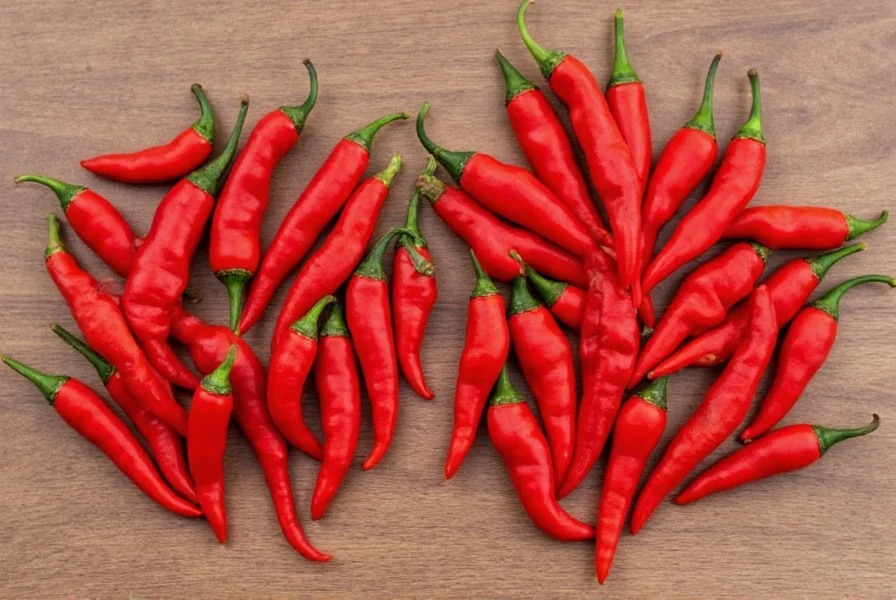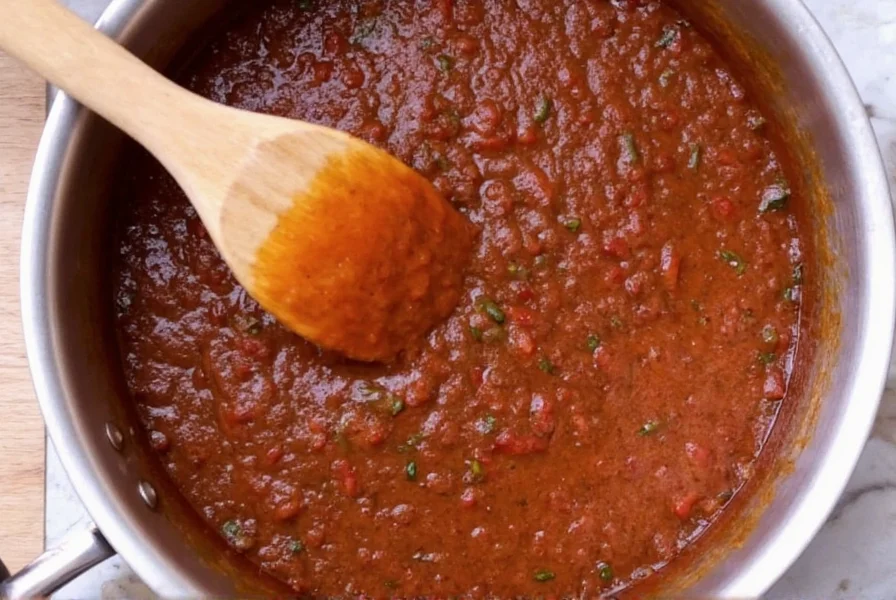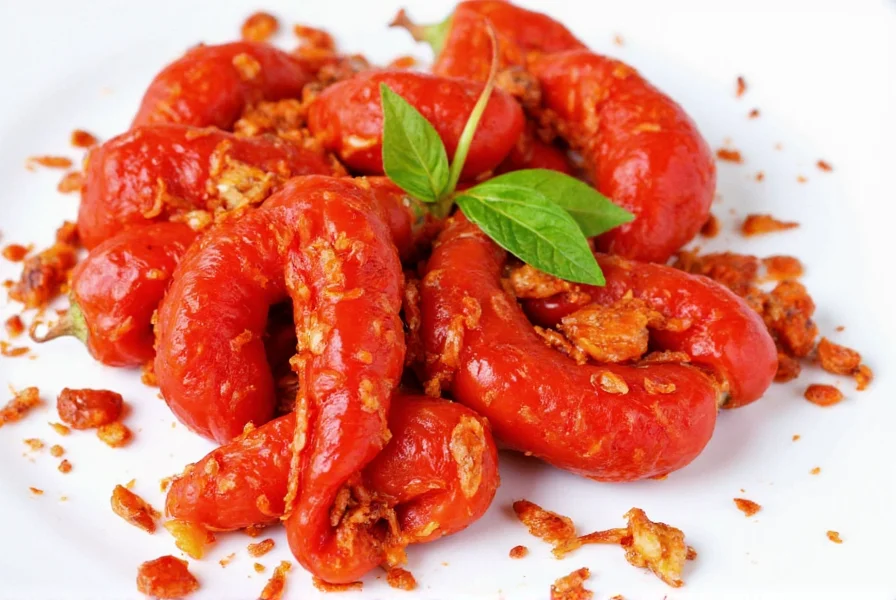The best ancho pepper substitutes are guajillo peppers for similar mild heat and tangy flavor, mulato peppers for comparable depth and sweetness, or a blend of smoked paprika and mild red pepper flakes for pantry-friendly alternatives. For recipes requiring ancho chile powder, use New Mexico chile powder or create a custom mix with 2 parts paprika, 1 part cumin, and a pinch of garlic powder.
When you're preparing authentic Mexican dishes like mole poblano or enchilada sauce, ancho peppers are often essential for their distinctive flavor profile. But what happens when you can't find them at your local grocery store? Understanding proper ancho pepper substitutes ensures your recipes maintain their intended character without compromising quality.
Understanding Ancho Peppers
Ancho peppers are dried poblano peppers with a rich, complex flavor profile featuring notes of dried fruit, coffee, and subtle earthiness. They typically measure 1,000-2,000 on the Scoville scale, making them mild compared to many other chilies. Their deep reddish-brown color and wrinkled appearance are distinctive characteristics that contribute both visual and flavor elements to dishes.
When seeking an ancho pepper alternative, consider these three critical factors:
- Heat level - Anchos provide mild warmth without overwhelming spice
- Flavor complexity - Their sweet, smoky, and slightly fruity notes are essential
- Texture contribution - Whole dried peppers rehydrate differently than powders
Top Ancho Pepper Substitutes
Guajillo Peppers: The Closest Flavor Match
Guajillo peppers offer the most similar flavor profile to anchos with their bright, tangy notes and moderate heat (2,500-5,000 Scoville units). While slightly hotter than anchos, they provide comparable depth when rehydrated and blended into sauces. For best results in recipes calling for whole dried peppers, use a 1:1 substitution ratio.

Mulato Peppers: The Rich Alternative
Mulato peppers, another dried poblano variant, deliver a deeper, more chocolatey flavor with even milder heat (about 2,500 Scoville units). Their flavor profile closely mirrors anchos but with additional notes of licorice and tobacco. These work exceptionally well in mole recipes where complexity matters most. Substitute mulatos for anchos at a 1:1 ratio in sauces and stews.
Pasilla Peppers: The Fruity Option
Pasilla peppers (dried chilaca peppers) provide a fruitier, raisin-like flavor with moderate heat (1,000-2,500 Scoville units). While not identical to anchos, they work well in many applications, particularly where sweetness matters more than smokiness. Use pasillas at a 1:1 ratio when anchos aren't available.
Pantry-Friendly Ancho Chile Powder Substitutes
When your recipe specifically calls for ancho chile powder rather than whole peppers, consider these accessible alternatives:
| Substitute | Ratio | Best For | Flavor Notes |
|---|---|---|---|
| Guajillo powder | 1:1 | Mole, enchilada sauce | Tangy, moderately spicy |
| Smoked paprika + cayenne | 2:1 ratio (2 tsp paprika : 1/4 tsp cayenne) | Dry rubs, soups | Smoky with controlled heat |
| New Mexico chile powder | 1:1 | Stews, chili | Bright, earthy, less sweet |
| Custom blend | 2 parts paprika, 1 part cumin, pinch garlic powder | Everyday cooking | Warm, aromatic, versatile |
When to Avoid Certain Substitutes
Not all chili alternatives work well as ancho pepper replacements. Chipotle peppers, while delicious, bring excessive smoke and heat that overwhelms delicate mole recipes. Cayenne pepper lacks the necessary complexity and adds disproportionate heat. Standard chili powder often contains additional spices that alter your dish's intended flavor profile.
For authentic ancho pepper substitute for mole preparations, prioritize guajillo or mulato peppers over powder alternatives whenever possible. The texture and rehydration properties of whole dried peppers significantly impact the final sauce consistency.

Adjusting Recipes with Substitutes
When using an ancho chile powder substitute, remember these adjustment tips:
- Start with 75% of the recommended amount, then taste and adjust
- Add sweetness (¼ tsp sugar or 1 tsp tomato paste) when using guajillo to compensate for anchos' natural fruitiness
- Increase liquid slightly when using powder substitutes versus whole peppers
- For mild ancho pepper alternative needs, reduce any substitute's quantity by 25%
Storage Tips for Substitute Peppers
Proper storage maintains the quality of your ancho pepper alternatives. Keep dried peppers in airtight containers away from light and heat. Whole dried peppers last 6-12 months, while ground alternatives maintain peak flavor for 3-6 months. For extended storage, freeze dried peppers in vacuum-sealed bags for up to 2 years without significant flavor degradation.
Common Substitution Mistakes
Cooks often make these errors when seeking how to substitute ancho peppers in recipes:
- Using equal parts of much hotter peppers like arbol
- Ignoring the rehydration process for whole dried peppers
- Adding substitute peppers too late in the cooking process
- Not adjusting other seasonings to compensate for flavor differences
Remember that the best guajillo vs ancho pepper substitute choice depends on your specific recipe requirements. Guajillos work better in tomato-based sauces, while mulatos shine in chocolate-forward moles.
Can I use regular paprika instead of ancho pepper?
Yes, but with modifications. Regular paprika lacks the depth of ancho peppers. For better results, use smoked paprika mixed with ¼ teaspoon of mild red pepper flakes per tablespoon of paprika to approximate ancho's flavor profile. This creates a more authentic smoked paprika instead of ancho pepper substitute.
What's the best substitute for ancho peppers in mole sauce?
Mulato peppers make the best substitute for ancho peppers in mole sauce due to their similar chocolatey notes and mild heat. If unavailable, use guajillo peppers with a small amount of unsweetened cocoa powder (⅛ teaspoon per pepper) to replicate the depth that anchos provide in traditional ancho pepper substitute for mole preparations.
How do I substitute ancho chile powder in a recipe?
For ancho chile powder substitution, combine 2 parts smoked paprika, 1 part ground cumin, and a pinch of garlic powder. Use this blend at a 1:1 ratio. This mixture works well as an ancho chile powder substitute in most applications, though it won't perfectly replicate the unique fruitiness of true ancho powder.
Are pasilla peppers the same as ancho peppers?
No, pasilla and ancho peppers come from different pepper varieties. Anchos are dried poblanos, while pasillas are dried chilacas. Pasillas have a fruitier, raisin-like flavor compared to anchos' earthier profile. They can serve as a where to find ancho pepper alternatives option but require slight recipe adjustments due to flavor differences.
Can I use chipotle powder instead of ancho pepper?
Chipotle powder works as a last-resort substitute but requires significant adjustments. It's much smokier and hotter than ancho. Use only half the amount of chipotle powder and add sweetness (like ½ teaspoon sugar per tablespoon of powder) to balance the flavor. This creates a modified mild ancho pepper alternative when no other options exist.











 浙公网安备
33010002000092号
浙公网安备
33010002000092号 浙B2-20120091-4
浙B2-20120091-4